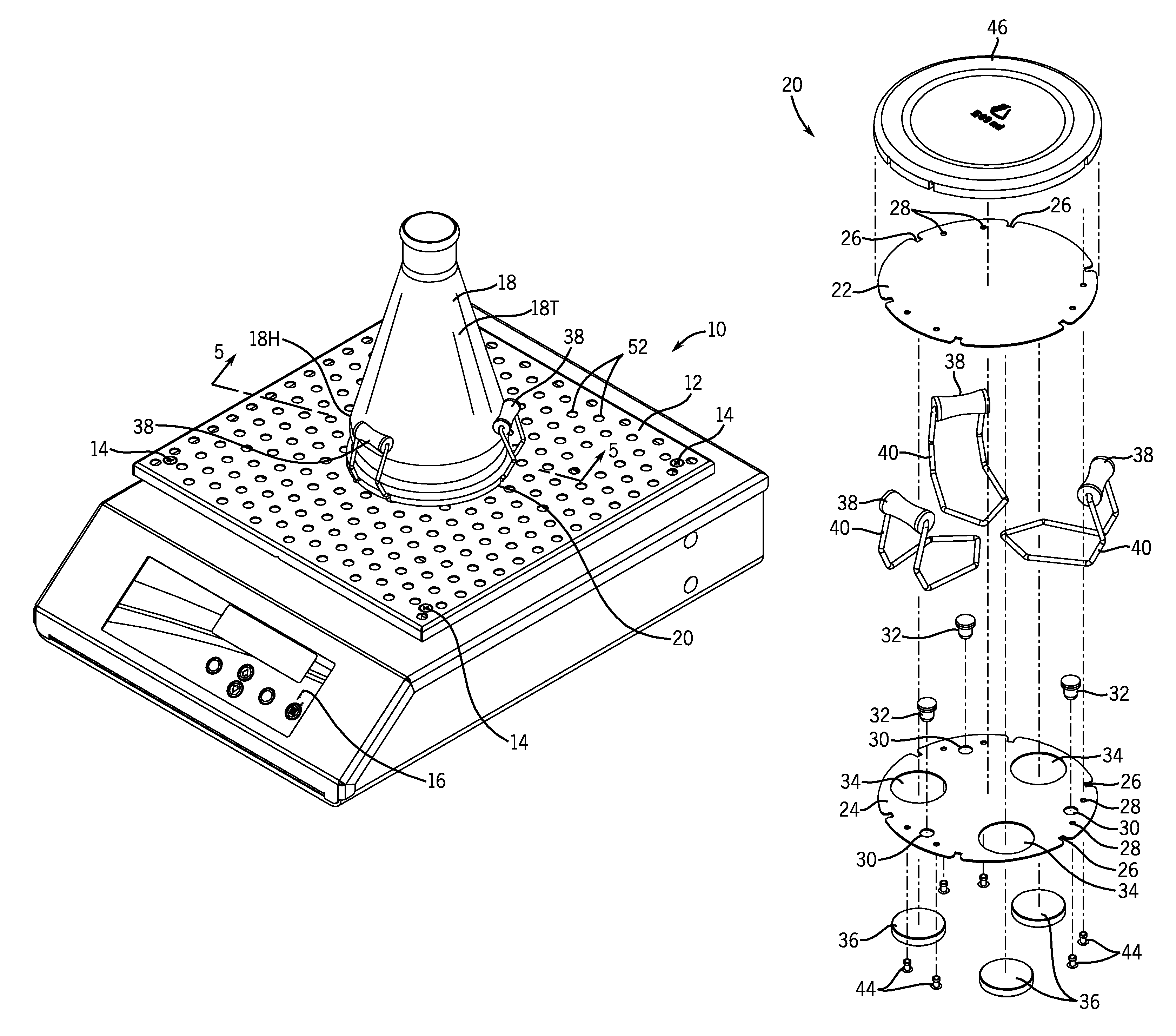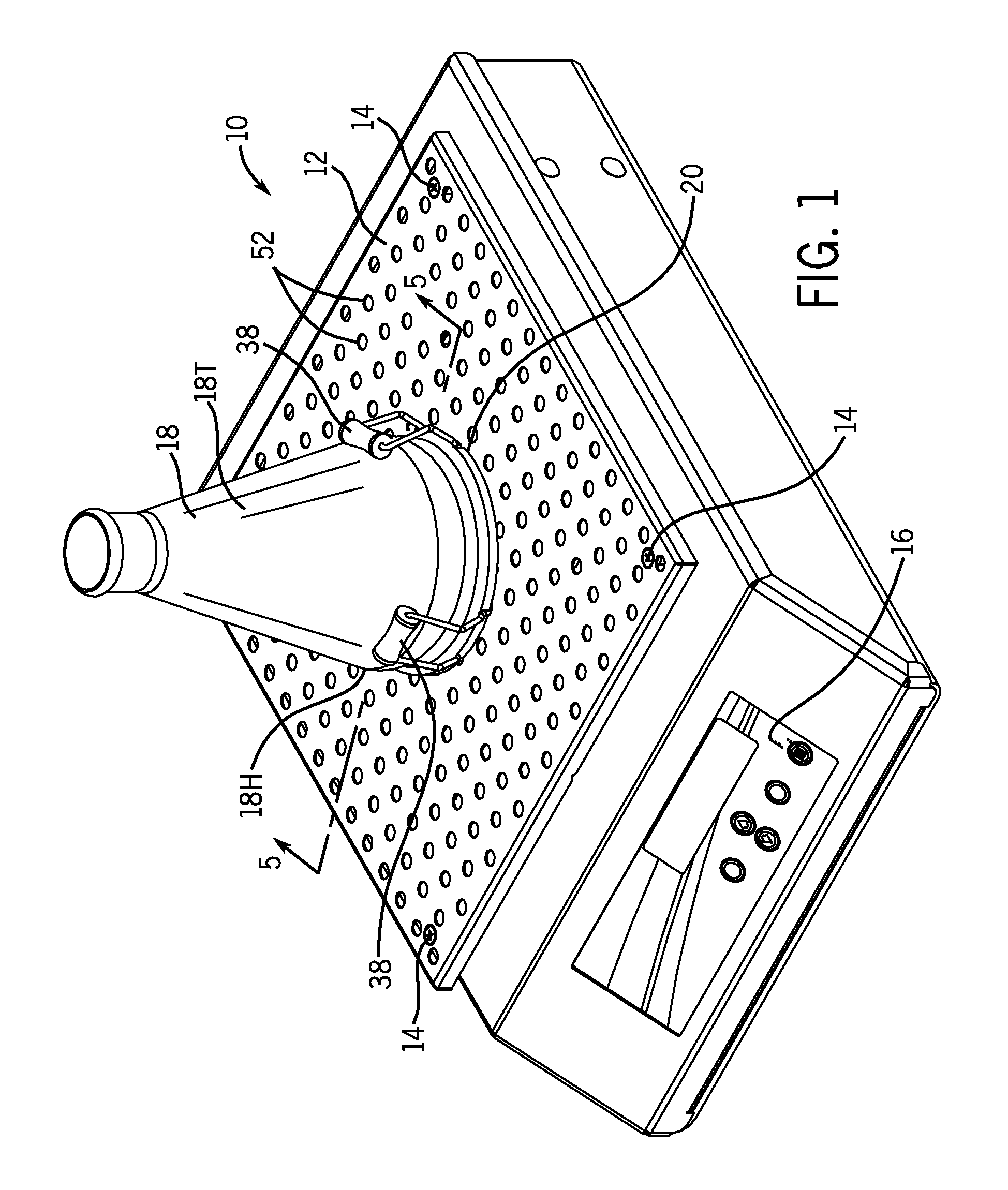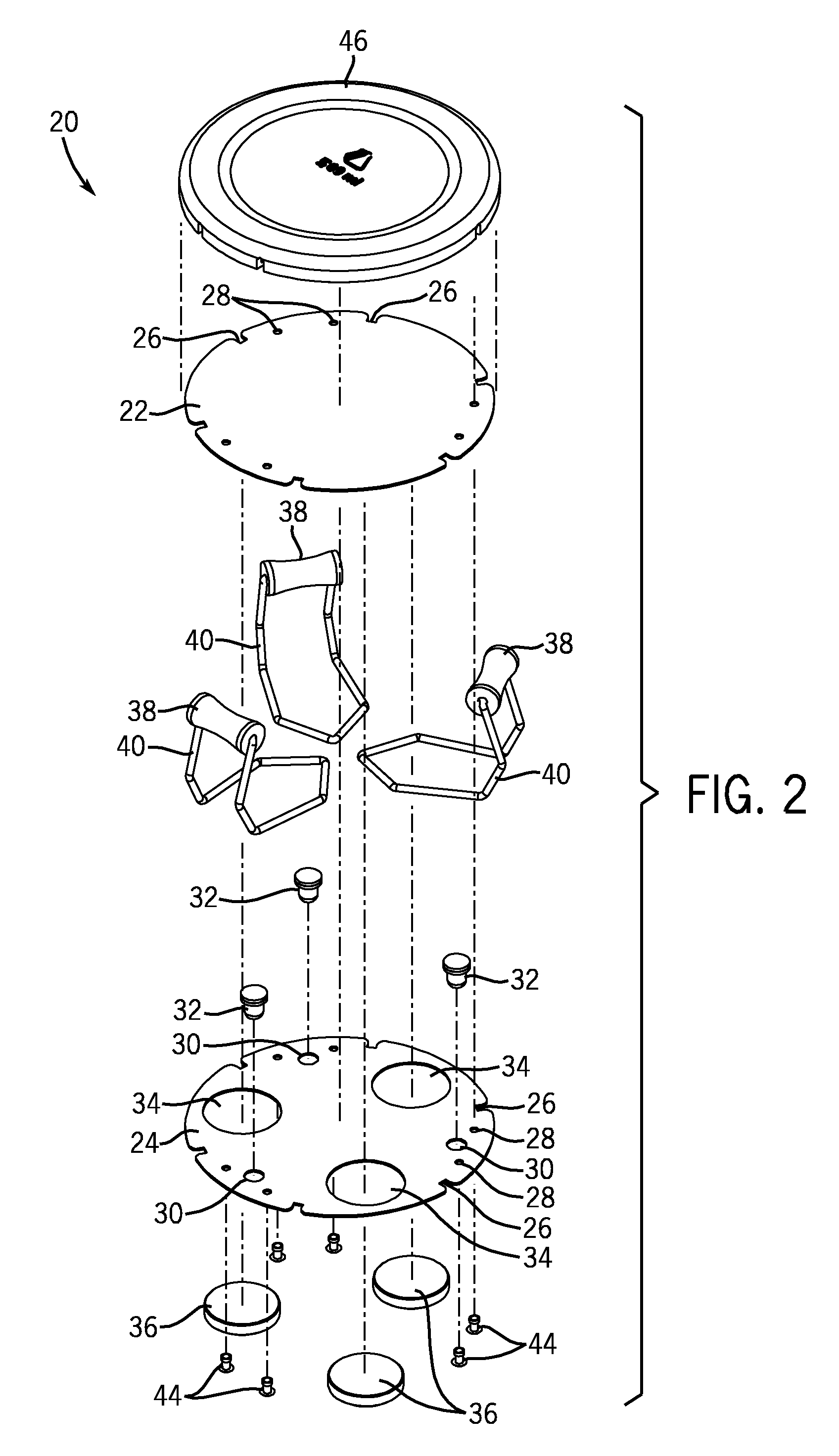Magnetic clamps for laboratory shakers
a magnetic clamp and shaker technology, applied in the field of laboratory products, can solve the problems of metal clamps, substantial damage, and flasks that spin within, and achieve the effect of avoiding the hassle of removal and simplifying installation
- Summary
- Abstract
- Description
- Claims
- Application Information
AI Technical Summary
Benefits of technology
Problems solved by technology
Method used
Image
Examples
first embodiment
[0031]Referring now to FIGS. 2-4, the flask clamp 20 in the invention has a top base plate 22 and a bottom base plate 24. The top base plate 22 is preferably made of magnetic stainless steel so that permanent magnets are attracted to plate 22. It is desirable that both base plates 22, 24 remain rigid, flat and even during construction and in use. The exemplary flask clamp 20 is a 500 ml flask clamp, and for this size of flask clamp a plate thickness of 0.038″ has been found to be suitable for the base plates 22 and 24. The top base plate 22 is generally circular in shape, but contains three pairs of notches 26 around its peripheral edge. The top base plate 22 also includes rivet holes 28. The bottom base plate 24 is generally the same size as the top base plate 22. Like the top base plate 22, the bottom base plate 24 includes rivet holes 28. As shown in FIG. 2, the bottom base plate 24 also includes notches 26 as shown in the top base plate 22. The bottom base plate 24 includes thre...
second embodiment
[0039]FIGS. 6 through 9 illustrate a flask clamp constructed in accordance with the invention. In many respects, the flask clamp 120 as illustrated in FIGS. 6-9 is similar to the flask clamp 20 described in FIGS. 2-5. The flask clamp 120 shown in FIGS. 6-9, however, is designed to accommodate larger flasks, such as a flask having a volume of 1000 ml. The flask clamp 120 includes spring fingers 140 and roller sets 138 designed to accommodate larger sized flasks than the bent wire form configuration illustrated in connection with the flask clamp 20 shown in FIGS. 2-5.
[0040]The flask clamp 120 in FIGS. 6-9 includes a top base plate 122 made of a magnetic stainless steel, and a bottom base plate 124 made of non-magnetized spring stainless steel. The bottom base plate 124 includes openings 134 for the magnets 136 as in the other embodiment as well as openings for the positioning bosses 132. In the flask clamp 120 shown in FIGS. 6-9, the spring fingers 140 are made of spring stainless ste...
third embodiment
[0043]FIGS. 10-13 illustrate the invention in which the clamp 220 is configured to hold a test tube rack 218. The clamp 220 has a substantially rectangular bottom base plate 224 made of a non-magnetic material such as non-magnetic steel. The bottom base plate 224 includes holes 234 for the magnets 236. It also includes holes for the positioning bosses 232 and for stabilizing feet 231. Integral with the bottom base plate 224 are upstanding walls 271 which include openings for mounting the other components of the clamp 220 for holding the test tube rack 218. A top base plate 222 is made of a magnetic steel material. As in the other embodiments, the magnets 236 pass through the openings 234 in the bottom base plate 224 and are attached, e.g. by adhesive or otherwise, to the top base plate 222. The top base plate 222 is attached to the bottom base plate 224 once the positioning bosses 232 and the stabilizing feet 231 are in place via screws 223 and nuts 225. A resilient finger member 24...
PUM
| Property | Measurement | Unit |
|---|---|---|
| temperatures | aaaaa | aaaaa |
| temperatures | aaaaa | aaaaa |
| volume | aaaaa | aaaaa |
Abstract
Description
Claims
Application Information
 Login to View More
Login to View More - R&D
- Intellectual Property
- Life Sciences
- Materials
- Tech Scout
- Unparalleled Data Quality
- Higher Quality Content
- 60% Fewer Hallucinations
Browse by: Latest US Patents, China's latest patents, Technical Efficacy Thesaurus, Application Domain, Technology Topic, Popular Technical Reports.
© 2025 PatSnap. All rights reserved.Legal|Privacy policy|Modern Slavery Act Transparency Statement|Sitemap|About US| Contact US: help@patsnap.com



